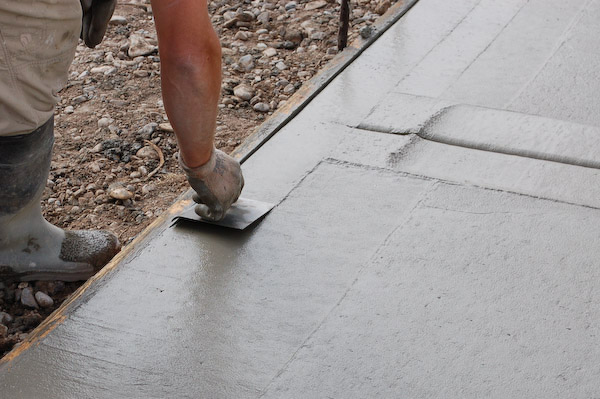 Concrete
Concrete
What raw materials is concrete made of?
Concrete is a mixture of cement, water and filler (aggregates). In order to obtain the special properties of special concretes, special additives and admixtures are introduced into the concrete mix.
What varieties of concrete are distinguished, depending on its density? Depends on apparent density, The following varieties of concrete are distinguished:
1. Light concrete with an apparent density of not more than 2,0 t/m3.
2. Plain concrete with apparent density 2,02,8 t/m3. If there is no danger of confusion with other types, plain concrete is simply called concrete.
3. Heavy concrete with an apparent density greater than 2,8 t/m3.
Concrete I is produced in strength classes from B5 to B25. Concrete II is produced in strength classes from B35 to B55.
Concrete used for reinforced structures must have the strength of class B15, which means, that its minimum compressive strength is 15 N/mm2.
How do voids and so-called. north?
Voids and cramps are formed in concrete as a result of insufficient compaction of the concrete mix.
What is the minimum concrete cover thickness for reinforcing bars in external reinforced concrete elements? The minimum concrete cover thickness for reinforcing bars in RC elements is 3 cm.
It is planned to make the coating on the old one, yet unpainted concrete facade. What substrate tests should be carried out? How can faults in the substrate be recognized??
| Type of substrate test | Recognition method |
| Structural defects of concrete | visual; on the basis of observations of iys and uneven contamination of the surface |
| Hardness | by scratching and rubbing |
| Scratch | visual; hairline scratches reveal themselves after wetting the concrete |
| Humidity | visual and using a hygroscope |
| Efflorescence | visual and by chemical analysis of the material with efflorescence, possibly through ratio analysis |
| Type of substrate test | Recognition method |
| Dirt | visual |
| The presence of fungi, lichens and mosses | visual |
| Plaster chipping | visual |
| Reinforcing steel corrosion | visual; based on the observation of lagging splinters |
| Depth
carbonation |
recess using a hammer and chisel, moisten with phenolphthalein or universal indicator solution; the depth of carbonation is seen as amusing strely in an alkaline environment |
Part of the release agent can be found after wetting. However, since we are considering an old building here, the presence of a release agent is not to be expected.
Please demonstrate the influence of the water-cement ratio on the quality of concrete.
The water-cement ratio means the ratio of the mass of water to the mass of cement
w / c ratio - mass of mixing water : cement mass
Because the mixing water is chemically bound during hydraulic hardening, concrete obtains optimal properties only with the appropriate water-cement ratio. In practice, this value is approx. 0,40.
If the value of this index is too low, the cement is not fully bonded and the concrete does not achieve the intended initial strength.
With too high a value of this indicator, due to the excess of water, voids are formed in the concrete and therefore the concrete cannot achieve its optimal strength. Otherwise, such concrete is carbonated faster due to capillary rising of water. In reinforced concrete elements, made of cement with a strength class 32,5, the value of the water-cement ratio should not exceed 0,65, and for other cements – 0,75. For frost-resistant concrete, the value of this index should not be greater than 0,55.